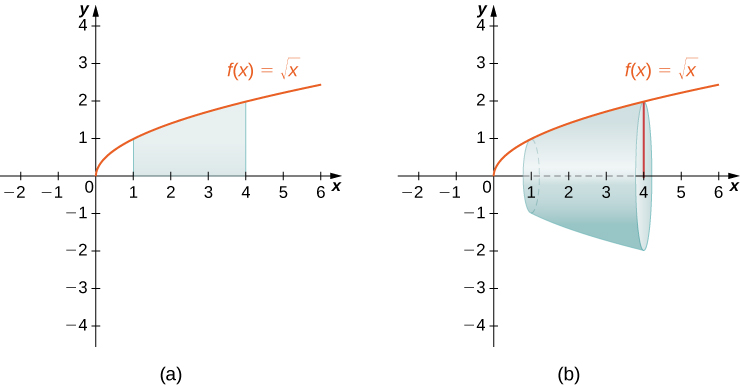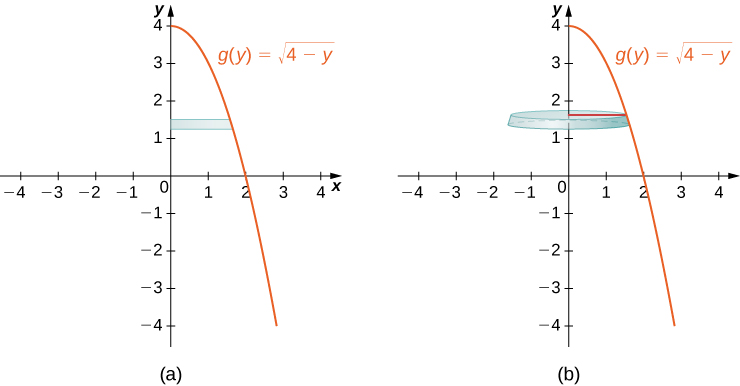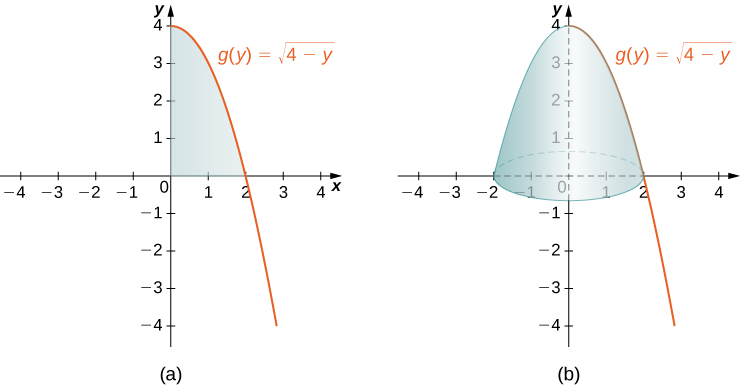| << Chapter < Page | Chapter >> Page > |
Let’s look at some examples.
Use the disk method to find the volume of the solid of revolution generated by rotating the region between the graph of and the over the interval around the
The graphs of the function and the solid of revolution are shown in the following figure.

We have
The volume is units 3 .
Use the disk method to find the volume of the solid of revolution generated by rotating the region between the graph of and the over the interval around the
units 3
So far, our examples have all concerned regions revolved around the but we can generate a solid of revolution by revolving a plane region around any horizontal or vertical line. In the next example, we look at a solid of revolution that has been generated by revolving a region around the The mechanics of the disk method are nearly the same as when the is the axis of revolution, but we express the function in terms of and we integrate with respect to y as well. This is summarized in the following rule.
Let be continuous and nonnegative. Define as the region bounded on the right by the graph of on the left by the below by the line and above by the line Then, the volume of the solid of revolution formed by revolving around the is given by
The next example shows how this rule works in practice.
Let be the region bounded by the graph of and the over the interval Use the disk method to find the volume of the solid of revolution generated by rotating around the
[link] shows the function and a representative disk that can be used to estimate the volume. Notice that since we are revolving the function around the the disks are horizontal, rather than vertical.

The region to be revolved and the full solid of revolution are depicted in the following figure.

To find the volume, we integrate with respect to We obtain
The volume is units 3 .
Use the disk method to find the volume of the solid of revolution generated by rotating the region between the graph of and the over the interval around the
units 3

Notification Switch
Would you like to follow the 'Calculus volume 1' conversation and receive update notifications?